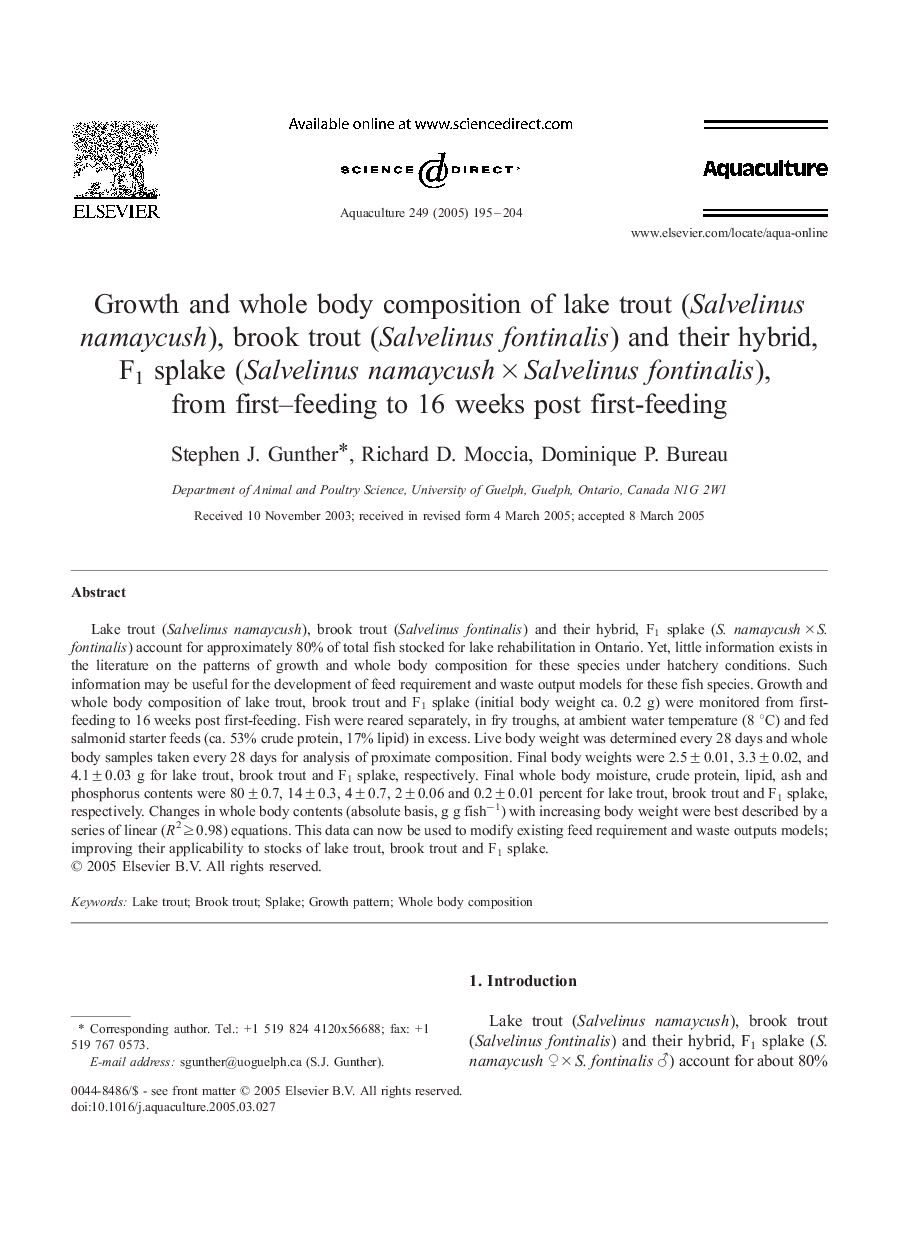| Article ID | Journal | Published Year | Pages | File Type |
|---|---|---|---|---|
| 8974686 | Aquaculture | 2005 | 10 Pages |
Abstract
Lake trout (Salvelinus namaycush), brook trout (Salvelinus fontinalis) and their hybrid, F1 splake (S. namaycush Ã S. fontinalis) account for approximately 80% of total fish stocked for lake rehabilitation in Ontario. Yet, little information exists in the literature on the patterns of growth and whole body composition for these species under hatchery conditions. Such information may be useful for the development of feed requirement and waste output models for these fish species. Growth and whole body composition of lake trout, brook trout and F1 splake (initial body weight ca. 0.2 g) were monitored from first-feeding to 16 weeks post first-feeding. Fish were reared separately, in fry troughs, at ambient water temperature (8 °C) and fed salmonid starter feeds (ca. 53% crude protein, 17% lipid) in excess. Live body weight was determined every 28 days and whole body samples taken every 28 days for analysis of proximate composition. Final body weights were 2.5 ± 0.01, 3.3 ± 0.02, and 4.1 ± 0.03 g for lake trout, brook trout and F1 splake, respectively. Final whole body moisture, crude protein, lipid, ash and phosphorus contents were 80 ± 0.7, 14 ± 0.3, 4 ± 0.7, 2 ± 0.06 and 0.2 ± 0.01 percent for lake trout, brook trout and F1 splake, respectively. Changes in whole body contents (absolute basis, g g fishâ1) with increasing body weight were best described by a series of linear (R2 â¥Â 0.98) equations. This data can now be used to modify existing feed requirement and waste outputs models; improving their applicability to stocks of lake trout, brook trout and F1 splake.
Related Topics
Life Sciences
Agricultural and Biological Sciences
Aquatic Science
Authors
Stephen J. Gunther, Richard D. Moccia, Dominique P. Bureau,
